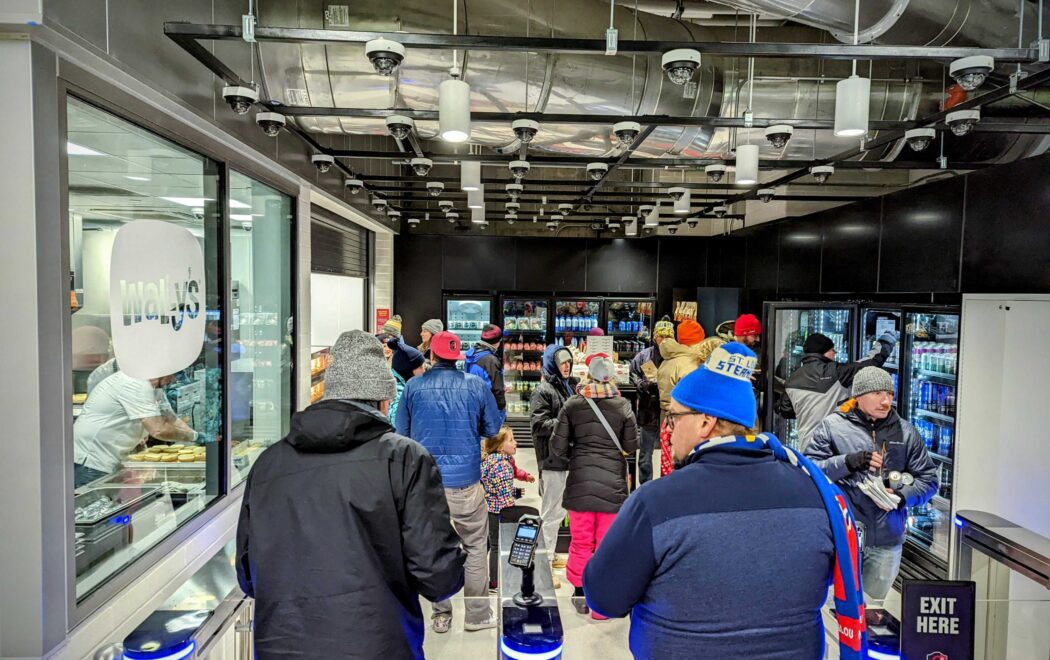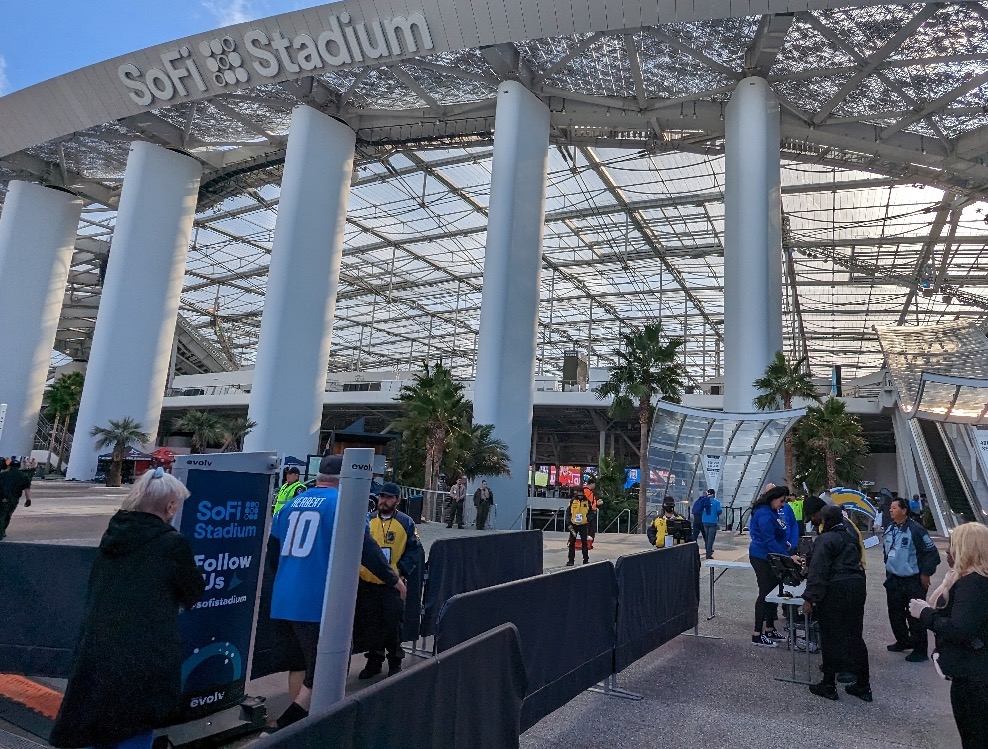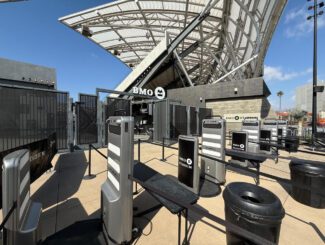
Looking back at 2022, it’s easy to proclaim it as a banner year for stadium technology. Innovation on multiple fronts arrived, not just as ideas but actual products and services that brought immediate improvement to stadium business areas like concessions, ticketing, security and infrastructure.
Will 2023 bring more acceleration of new ideas and technology deployments as venues continue to try to solve existing pain points as well as address newer ones, like staffing concerns? Here is our quick-take outlook on a number of the topics we tracked last year and will continue to do so going forward, to help venue owners and operators better understand what their peers are doing and how that might inform their own plans.
No slowdown ahead seen for concession technology
The area of stadium operations that saw the most visible growth of new technology use had to be concessions operations, with multiple new ideas not just launched but already building up a head of steam as 2022 progressed.
One of the more revolutionary ideas that caught on instantly with both fans and operators was the checkout-free concession stand, where customers simply scanned a credit card (or their palm) at entry, went through the stores picking out the items they wanted, and just left, with billing taking place later online. Though we haven’t yet seen any detailed reports of revenue generation, the general feedback so far from venues and caterers is that the stands can significantly outperform traditional stands in both revenue and speed of transactions.
From August 2022 until January 2023 the number of stadium-based checkout-free stands from the two market leaders — Zippin and Amazon — almost doubled, from 44 in late summer to 81 at our latest count. Though we have heard some pushback from stadium reps about the upfront costs of the stores, some recent additions to store designs, including smaller, less expensive stripped-down versions of the stores, should convince more venues to test the checkout-free waters in 2023.
We also expect to see growth in the simpler self-serve terminals market, where leaders like Mashgin and Toshiba are providing devices that allow for much faster concession transactions with fewer live staff needed.
Mashgin, which has termimals that use cameras to determine items placed on its base, and Toshiba, which has special-built units with large scanning screens designed to be faster and easier than similar grocery-store devices, are winning deployments based mainly on flexibility and cost, as they can be added to existing stands without much reconfiguration.
Facial authentication technology for even-faster payment and age verification tasks is also making concession-stand inroads, especially at single-purpose stands like the TendedBar stands. We wouldn’t be surprised to see Zippin add facial-authentication technology as a payment and verification choice going forward, since it seems a good fit.
Adoption of walk-through security scanners speeds up
Walk-through security scanners, a topic that we highlighted early last year, saw its acceptance grow during 2022 as big-name stadiums adopted the technology that is replacing the older metal-detector devices. By allowing fans to walk past scanning devices instead of stopping, the devices can significantly reduce the time fans spend in venue-entry procedures, one of the biggest pain points of the game-day experience.

Evolv Technology got a big boost when SoFi Stadium signed up with the company as its security provider, adding the venue to a list of top NFL stadiums using Evolv that grew throughout the year. The Evolv Express systems, which were in place for the full 2022 NFL season at SoFi, joined deployments at Atlanta’s Mercedes-Benz Stadium, Nissan Stadium in Nashville, First Energy Stadium in Cleveland, Acrisure Stadium in Pittsburgh and Gillette Stadium in Foxborough, Mass., among other venues.
Xtract One, the company formally known as Patriot One, signed a formal deal with venue owner and operator company Oak View Group in 2022 to be a preferred security systems provider. The deal netted Xtract One some early venue wins, including the new Moody Center at the University of Texas in Austin and at the new Acrisure Arena in Palm Springs. CEIA, the longtime provider of traditional metal detectors, was also winning conversion deals for its new walk-through OpenGate line.
Long-throw antennas are adding more customers
Innovation on the wireless antenna front for both cellular and Wi-Fi networks jumped ahead in 2022 as well, with the lens antennas from MatSing and Cisco’s new 9104 “Marlin” Wi-Fi antennas giving venue network designers new options to cover previously hard-to-reach areas.
MatSing antennas, which now seem to appear regularly in new stadiums and retrofits, were used to completely redo the cellular coverage for the upper decks at Acrisure Stadium, a deployment of approximately 60 antennas. And the new Cisco Wi-Fi antennas were key to a top-down deployment at Geodis Park, new home of the Nashville SC MLS team (look for a profile later this year in Stadium Tech Report).
The 9104 antennas were also used in the Wi-Fi upgrade at State Farm Stadium prior to this year’s Super Bowl (see profile in this issue), and have found homes in several arenas we know of where they are being added to bring Wi-Fi coverage to stadium floor areas for concerts and other events. UBS Arena is just one of the venues known to have installed the 9104s for this purpose.
Facial authentication the next to take off?
Finally, 2022 also saw several live deployments of facial authentication technology used in several different applications, including ticketing and concessions purchases. At First Energy Field in Cleveland, the NFL Browns deployed Wicket’s facial authentication technology for faster ticket verification, a tactic also used by the New York Mets at Citi Field and at Mercedes-Benz Stadium in Atlanta.
The Browns also experimented with Wicket technology, along with ID verification services from IDmission, to support beer purchases where age and payment verification were done by looking at a screen. We expect to see more uses of facial authentication technology as 2023 unfolds.










